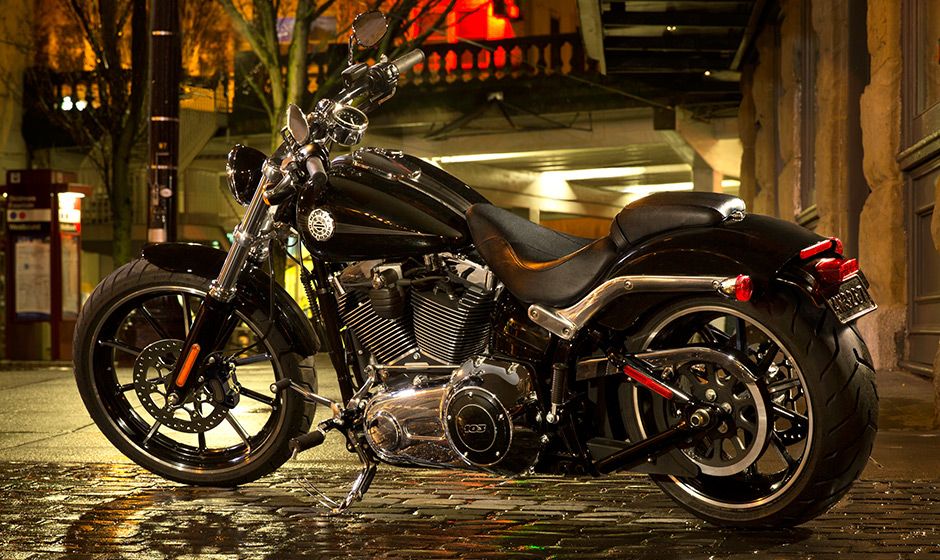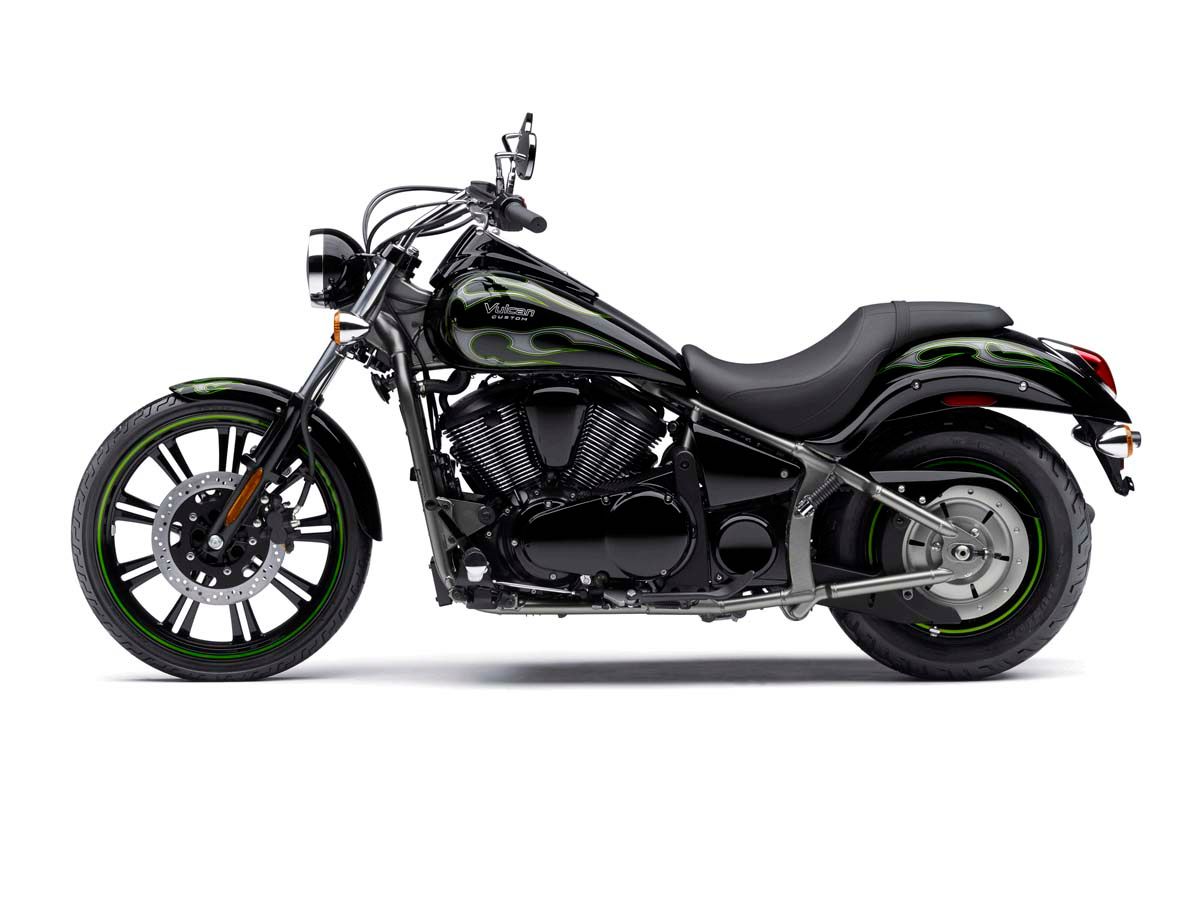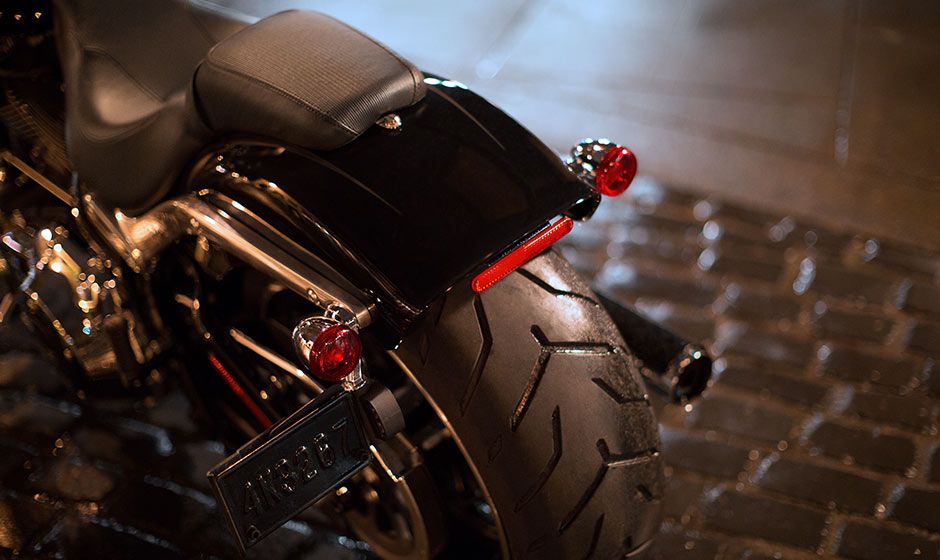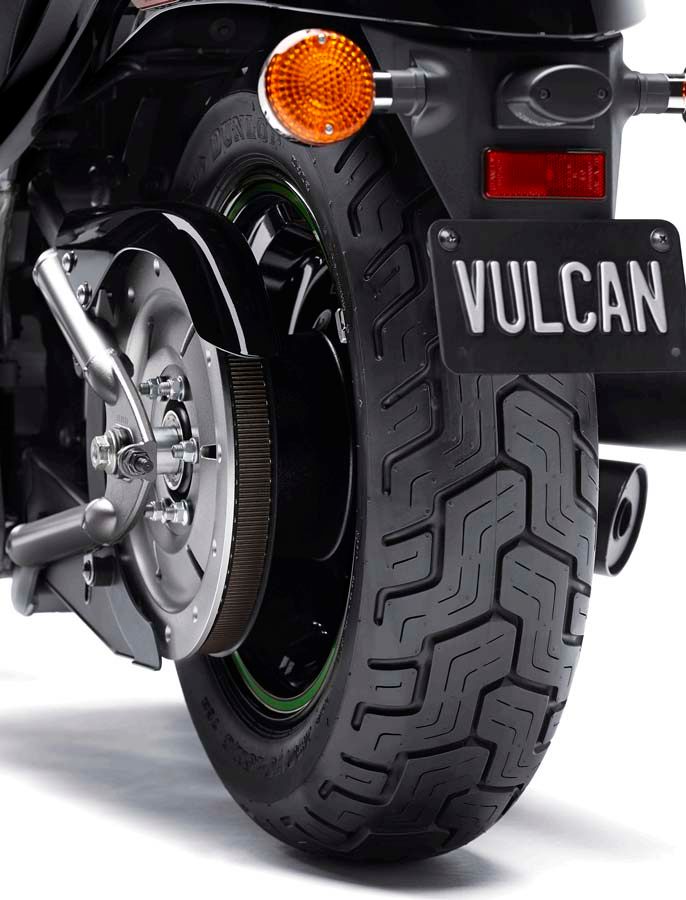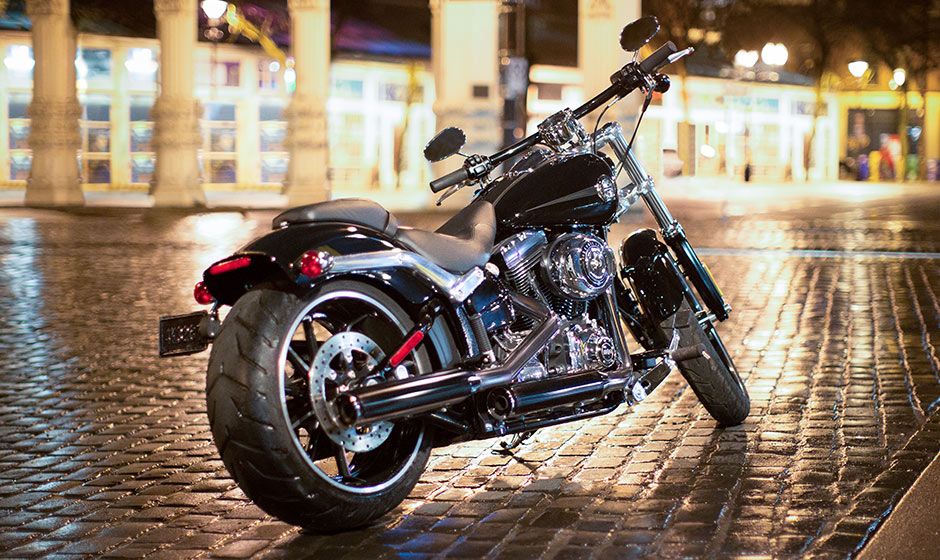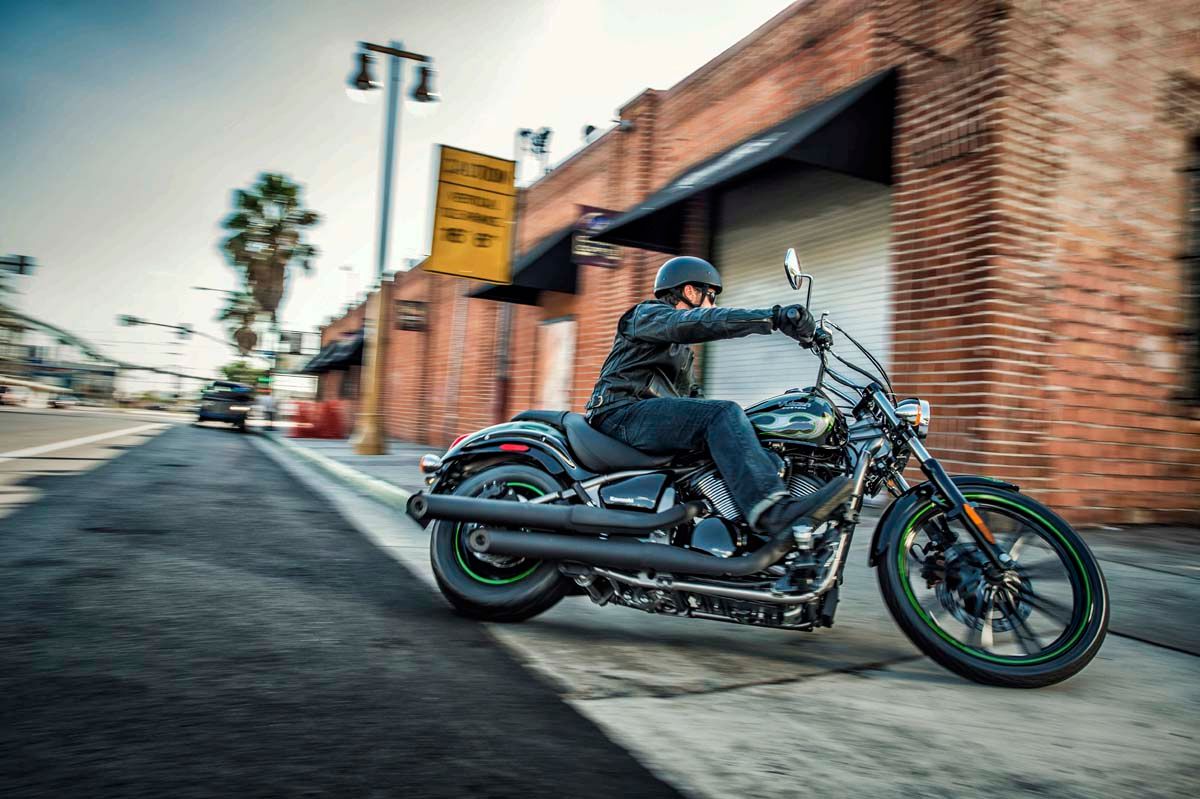Rigid-looking frames are nothing new, and many manufacturers have followed Harley-Davidson->ke300 into this cruiser->ke392/dragster sub-genre. Kawasaki->ke299 is one such competitor, and its entry for the 2015 model year is the Vulcan 900 Custom. Since it so closely resembles the H-D Softail Breakout, I wanted to see how these two stacked up against each other. Let's take a look, shall we?
Continue reading for my comparison of the Softail Breakout versus the Vulcan 900 Custom.
Design
I'm a little bit nearsighted, and these two sleds are hard to tell apart from a distance. The profiles are nearly identical; they both have a big, 21-inch front hoop, and the 18-inch rear on the Breakout is hardly distinguishable from the Vulcan's 15-inch rear rim. Look at it from the rear and this changes dramatically when you behold the 240 mm-wide tire on the Harley versus the 180 mm rubber on the “Kawi.”
Still, both tire selections give their respective bikes a “dragtastic” vibe, and both bikes cut overall low, lean and mean figures. Besides the radiator on the Vulcan, one of the biggest visual differences lies in the drivetrain paint scheme; Kawi blacks out the engine and tranny, which does a good job of making the radiator less conspicuous. Harley celebrates the drivetrain with polished aluminum or chrome, setting it apart from the frame and sheet metal like a gem in a setting.
Chassis
H-D may have been the first to build a production bike with a triangular swingarm meant to mimic the lines of the old hardtail frames, but it wasn't the last to enter this retro-style market. Again, there is little to choose between the two. Both share the hidden-shock method to complete the illusion started at the swingarm, and suffer its curse – a relatively low rear-shock travel distance of just over four inches. Harley's “Softail->ke1819” has never truly been soft, except in comparison to its predecessor the hardtail, and this is nearly always true with this frame design.
Neither bike is overburdened with “extra” brakes, and both lack that pesky, second front brake disc. While the Breakout does have ABS and the Vulcan has none, I think that both bikes would benefit from dual front brakes. Sure, I know they did it to minimize the visual impact of the brakes on those big, beautiful front wheels (giggity!), but I would rather minimize another sort of impact, know what I mean? At least both makers went with 30-plus degree steering heads, with H-D at 35 degrees and Kawi at 33, that lend a chopper-ish look to their front ends.
Drivetrain
Now we get to the onion, ladies and germs. Whatever similarities these rides may have as far as looks go, they are as chalk to cheese when it comes to the powerplants. Though they both follow a V-twin configuration, the H-D tops the displacement category with 103.1 cubic-inches – almost double the 55.1-inch displacement of the Vulcan. Naturally, the torque figures reflect the size difference; the Breakout puts out 95.2 pound-feet of torque at 3,000 rpm versus the 58.2 pound-feet at 3,500 rpm from the Vulcan. This performance split is not necessarily a bad thing – the smaller engine is lighter, hence easier to hold up (stand up) and is less intimidating, and obviously the Kawi will enjoy a bit more in the way of mileage. The engines are the main tradeoff between these bikes. The question is; do you want to be a stoplight burner, or is it enough to look like one?
Price
Sticker shock is another point of contention between these two rides. Kawasaki priced the Vulcan 900 Custom at a mere $8,499, well within the means of the entry-level crowd, and less than half the price of the Breakout's lofty $18,599 tag. This is a case where you trade more money for more engine and the H-D name. For many, the H-D brand isn't an instant draw, and it becomes hard to justify the extra cash for the extra performance. It all comes down to how you plan to ride, and how much money you want to spend.
He Said
“In the end, these two bikes are similar in looks alone for the most part. The price differential and the influence brought to bear by the Harley name means that these two machines will appeal to two very different types of buyers. Having established that they both have a niche to fill, I would say that both are good buys for their respective markets.”
She Said
My wife and fellow writer, Allyn Hinton, says, "They are both good-looking bikes, and the Kawasaki definitely fills a niche in the market, but I can't get past the Vulcan trying a little too hard to look like a Softail. Still, the Breakout is not a Project Rushmore bike so I don't automatically lean toward it, and the small engine in the Vulcan is less intimidating than the big Twin Cam in the Harley. Price-wise, you can get two Vulcan 900 Custom bikes for less than the Breakout."
Specifications
|
Specification: |
Softail Breakout |
Vulcan 900 Custom |
|
Engine: |
Air-cooled, two Valves per Cylinder, Twin Cam 103B™ |
Four-Stroke, Liquid-Cooled, SOHC, Four Valves Per Cylinder V-Twin |
|
Displacement: |
103.1 Cubic Inches |
55.1 Cubic Inches |
|
Bore: |
98.4 mm |
88 mm |
|
Stroke: |
111.1 mm |
74.2 mm |
|
Compression Ratio: |
9.6 to 1 |
9.5 to 1 |
|
Engine Torque: |
95.2 Pound-Feet at 3,000 rpm |
58.2 Pound-Feet at 3,500 rpm |
|
Fuel System: |
Electronic Sequential Port Fuel Injection (ESPFI) |
DFI® With Dual 34 mm Keihin Throttle Bodies |
|
Transmission: |
Six-Speed, Constant Mesh, Foot Shift |
Five-Speed With Positive Neutral Finder |
|
Final Drive: |
Belt |
Belt |
|
Brake: |
Four-piston fixed caliper front; Two-piston floating caliper rear |
300 mm Hydraulic Disc front, 270 mm Hydraulic Disc rear |
|
Length: |
96.3 Inches |
94.7 Inches |
|
Width: |
36.0 Inches |
35.2 Inches |
|
Height: |
40.9 Inches |
44.1 Inches |
|
Seat Height, Unladen: |
26 Inches |
27.0 Inches |
|
Ground Clearance: |
4.7 Inches |
5.5 Inches |
|
Rake (steering head) : |
37 Degrees |
33 Degrees |
|
Trail: |
5.7 Inches |
7.2 Inches |
|
Wheelbase: |
67.3 Inches |
64.8 Inches |
|
Tires, Front Specification: |
130/60B21 63H |
80/90x21 |
|
Tires, Rear Specification: |
240/40R18 79V |
180/70x15 |
|
Fuel Capacity: |
5 Gallons |
5.3 Gallons |
|
Curb Weight: |
710 Pounds |
610.8 Pounds |

